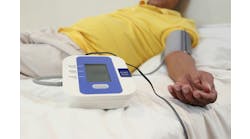Penn Medicine is a Philadelphia-based $3.5 billion enterprise consisting of the University of Pennsylvania School of Medicine and the University of Pennsylvania Health System, which includes three hospitals — the Hospital of the University of Pennsylvania, Pennsylvania Hospital and Penn Presbyterian Medical Center. Recently, HCI Associate Editor Kate Huvane had a chance to chat with VP and CIO Michael Restuccia, who was named VP and CIO at Penn Medicine in March, 2008 after serving as interim CIO for a year.
KH: With Epic, are you using a suite of products or do you operate with a best-of-breed philosophy?
MR: We have what I call our “Pillars of Strength” here at UPHS. We utilize Epic for the ambulatory EMR and we use the IDX BAR system, which is kind of old right now, to support our ambulatory registration, scheduling and billing requirements. On the inpatient side, we use the Siemens INVISION application for registration and billing, and we are an Eclipsys Sunrise Clinical Manager from the order entry perspective.
George and his team previously were able to achieve 100 percent physician CPOE across all three hospitals and full medication documentation on the electronic meds administration record by the nurses, which is an outstanding achievement. I’m pretty fortunate that I’m in a position where they’ve worked through some difficult implementations in the past on CPOE; some of the pharmacy implementation efforts are up and running and there’s actually a vision and direction that we’re spending a lot of time implementing right now.
KH: What specific efforts are you working on in pharmacy?
MR: At this point, we’re focused on implementing the Eclipsys Sunrise Medication Manager integrated pharmacy system at one of our hospitals, and that’s the Hospital of the University of Pennsylvania — it’s our flagship hospital. We do have a competing pharmacy system at the other two hospitals, Pennsylvania Hospital and Presbyterian Medical Center, and that’s the McKesson pharmacy system. But it’s not integrated; it involves interfaces and we thought, while we had the chance, we would pilot out the Eclipsys pharmacy system in preparation for closed loop medication management.
It’ll probably take about 12 months to install. We’re looking at first quarter of 2009 to activate the application.
KH: Everything considered, it sounds like you definitely have a full plate at Penn.
MR: It’s never ending. We’re also rolling out the Eclipsys Knowledge-Based Charting solution. I don’t know how much you know about that product, but knowledge-based charting is a pre-packaged set of documentation templates with integrated evidence-based clinical content developed by a consortium of hospitals. This allows us to deliver clinical IS functionality at a quicker pace by leveraging best practices and clinical knowledge from several hundred hospitals that participate in the consortium. As an example, if a patient has a stroke and enters the hospital, the patient care plan will have already been agreed upon, and then the nurse will have their actions, the therapist will have their actions, and the dietary team will have their actions, and it’s all integrated together in the same documentation tools. And based upon your activities, you document what you have done and what you have observed and it’s one unified record, so that everyone can see what everyone else is doing. It helps standardize the care, utilizing best practices, and greatly improves communication among the caregivers. In addition, it eliminates the lost chart, which can be an issue and makes the clinician’s notes readily accessible, regardless of which facility the patient resides.
KH: Very interesting — I think it’s really important to establish those standards. Now you said the Perelman Center is being built as a digital facility. Do you have plans to make any of your other facilities paperless as well?
MR: I think a lot of that has been achieved in prior years in moving UPHS more digitally oriented on several fronts: one is that we use a tool from a company called ASG. It’s called ASG-Cypress and it’s an automated report distribution system that electronically distributes reports to end users. If someone really needs to print the report, then they can print it, but we’ve greatly reduced the paper within the health system based upon that. The second thing is we use the IDX radiology system combined with the GE PACS solution. This combination has allowed the radiology department to be pretty much paperless. But clearly those efforts were done prior to me getting here.
KH: It seems like the whole concept of going digital is significantly easier when you’re building a new facility as opposed to going back in and implementing systems where technology is already in place.
MR: Exactly. And it’s one of those things up front where if you don’t design the storage space, you can have all the paper you want, but there’s nowhere to put it. So you may as well get on board with the electronic thing.
KH: So does that sum up everything you’re working on now?
MR: Not exactly, but that’s enough for now (laughs). There’s heavy emphasis, when I look at the next 12 to 24 months, as you can tell, on the deployment of clinical applications and the provision of access to information. We have over 100-plus applications within the health system supporting all our needs, but it’s often difficult to get access to that information. We are investigating a single sign-on/context management solution and we haven’t really selected our vendor yet, but we do have plans to roll that out beginning in July of this year.
And then the final area where I think we have huge endeavors and opportunities is in enhancing our linkage is with the School of Medicine. Right now, or at least previously, the health system went its way and the School of Medicine went its way in terms of computing management. Just by its nature, the School of Medicine has different systems than we have in the health system. The thing that does link us together is the concept of research, and in order for our researchers from the School to accelerate and improve their rate of research; they need health system data. Thus, we are making significant investments in the development of a health system data warehouse that will pull in information from our financial and clinical applications. We spoke about Siemens (SMS), IDX, Eclipsys and Epic; we also have an emergency department system, ICU monitoring system and patient progression application that will feed into the warehouse. This warehouse will store data in a homogenized and synthesized manner, because as you know, each system stores data differently. So we have to clean it up a little, and we’ll put it in one central location and then work with our researchers from the School in order to provide them the information necessary to facilitate their research activities and clinical trial activities.
KH: That seems like something that could greatly benefit both the health system and the school of medicine. Is this a long-term goal?
MR: Our first deliverable will be in the third quarter of this year. The creation of the VP/CIO position of PENN Medicine required a little bit of restructuring within the health system and the School of Medicine. In addition to being CIO of the health system, I’m also responsible for the research computing associated with the School of Medicine, and that role didn’t really exist previously. Thus in order to achieve this goal of integration between the health system and the School of Medicine, Penn’s executives believed in aligning form and structure.
KH: So you see this responsibility as another facet of your role.
MR: Absolutely. And from a short term prospective, I think we have some warehousing efforts that will facilitate some of our researchers. Longer term, our plans will focus on the development of a research computing environment that will support all of our researchers. This will greatly enhance the computing capabilities of our researchers from a processing, storage, security, support and compliance perspective. It sounds kind of basic, but when you’re a researcher, you’re so focused on your day-to-day research activities that you’re not always prepared for the computing infrastructure requirements associated with the research. So from a warehousing and infrastructure perspective, we’re linking and spending a lot of time with our researchers.
KH: The effort to centralize infrastructures is something we’re hearing a lot about right now. It’s a big issue.
MR: I’d love to talk to you more about that at some point because I think we’re moving pretty rapidly in that direction.
We’ve already begun some efforts where we do have a data center on campus and we’ve begun to work with the researchers to figure out what we can house for them and what we can’t. The problem is, on the researcher side, they consistently deal in terabytes of data. Any one study and statistical gyration just generates more terabytes of data. So the storage requirements for the research organization in particular don’t just grow incrementally — it’s almost exponentially. And as a result, we’re sitting here saying, we need a bigger building.
KH: It’s a daunting thing to think about how much storage space is needed for all the data versus the space most facilities actually have.
MR: Right, and we’ve all been educated to generally think in terms of Moore’s law — that is, you can consistently process or store more using smaller chips and devices. We keep thinking it’s going to require less, but at the rate these guys are going on research, it’s clearly creating the need for more.
So yes, we have a lot of good firsthand experience already, and we’ll have even more down the road.
KH: I think it’s a really interesting topic and it’s very timely. I think it’s something we really need to look at.
MR: Our perspective here — and you hit it right at the beginning when you said, wow that’s a pretty big place — is that it is pretty big, and the data needs are huge and the storage needs are huge, just on the health system side. But it appears to me they’re minimal compared to what you need on the research side, which is really daunting. You thought you had your hands full on an 8-foot wave, and little did you know there was a 30-foot wave coming at you.
